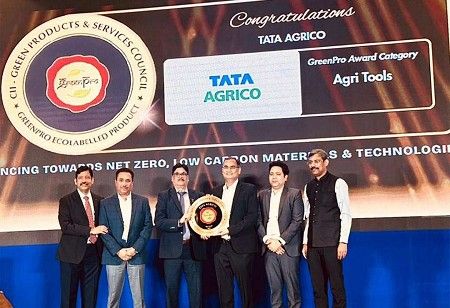
Tata Steel has announced that their flagship hand tools brand, Tata Agrico, has attained the first GreenPro Certification from the Confederation of Indian Industry (CII) - Green Products and Services Council for an agricultural tools brand in India.
The GreenPro Certification represents an expanded leap for Tata Steel in relation to sustainability and acknowledges Tata Agrico's commitment to supplying Indian farmers with tools in an environmentally conscious, resource-efficient manner. The award was presented at a formal ceremony in Chennai with sustainability leaders, CII officials and industry experts in attendance.
Peeyush Gupta, Vice President – TQM, Group Strategic Procurement & Supply Chain, Tata Steel, stated, "We are very proud to receive the GreenPro Certification for Tata Agrico. This certification represents our commitment to sustainable agricultural support through performance-based products that also have minimum environmental impact. In a country whose economy is based on agriculture, this is both recognition of and additional focus on responsible business."
The GreenPro eco-label is a Type-I eco-label certification that assists consumers in identifying products that meet stringent environmental performance criteria. It is a detailed assessment that includes raw materials, manufacturing processes, energy efficiency, recyclability, and life cycle impact.
Also Read: PM Modi Inaugurated ₹1,122 Crore Power Projects in Gujarat
Founded in 1925, Tata Agrico is the first brand of Tata Steel, and thereby, very few brands in Agriculture and Infrastructure that can be trusted for high quality hand tools. Tata Agrico has a vast product portfolio including agricultural implements, garden tools, welding electrodes, cutting wheels, grinding wheels and more.
The recognition reinforces Tata Agrico's leadership through innovation, durability and sustainability, while encouraging India to transition to greener and more sustainable farming practices.
We use cookies to ensure you get the best experience on our website. Read more...